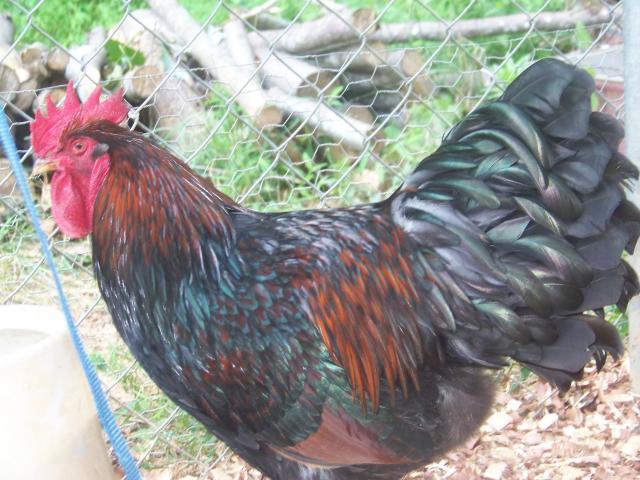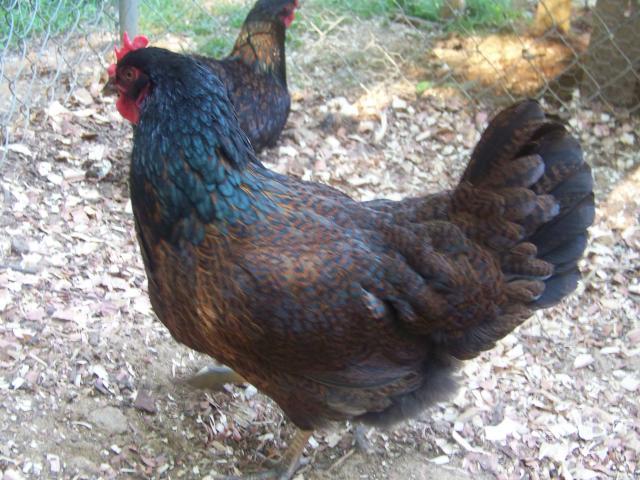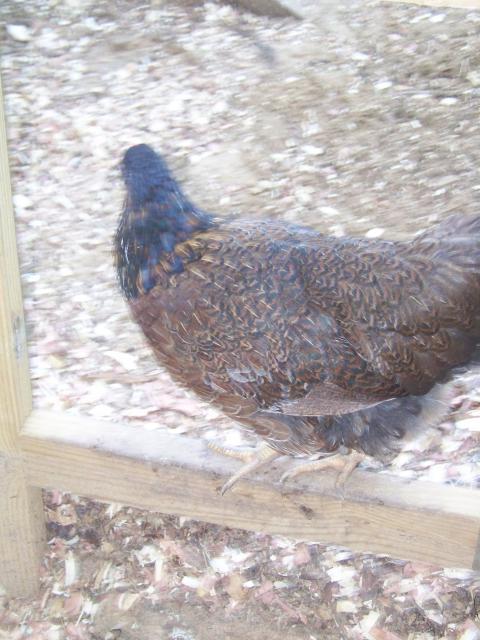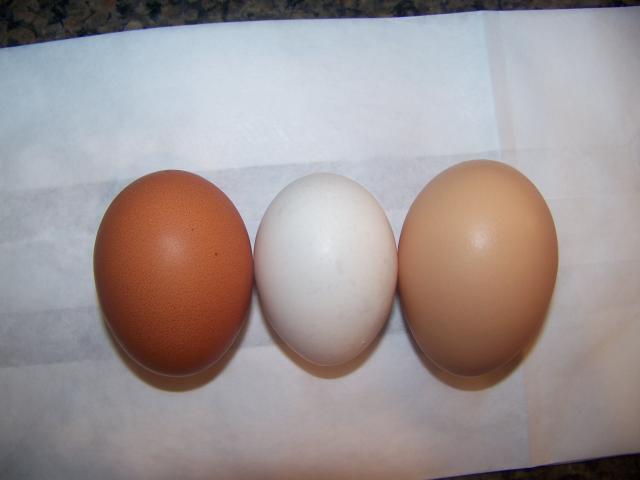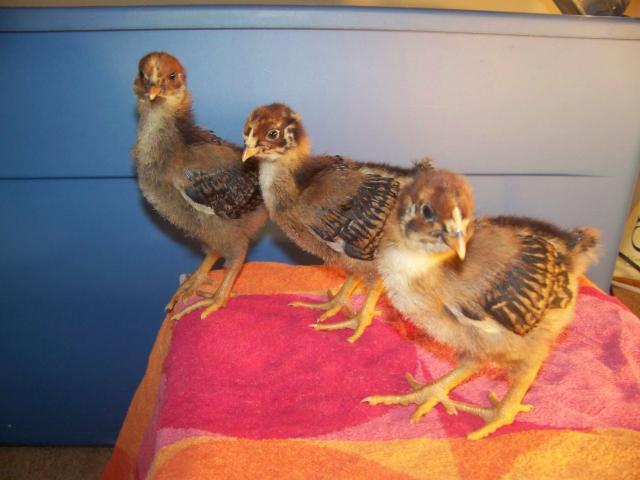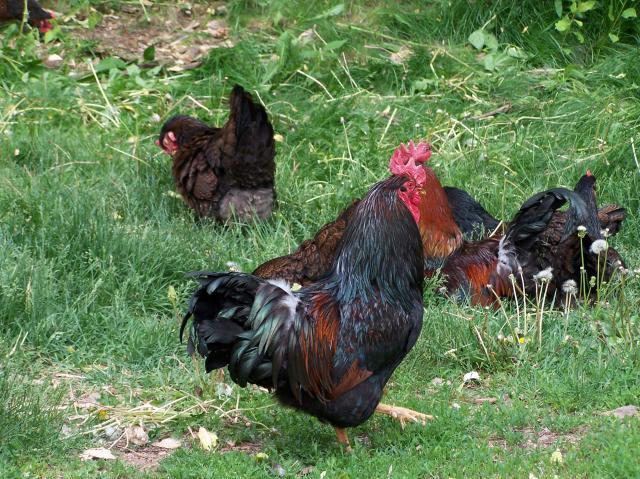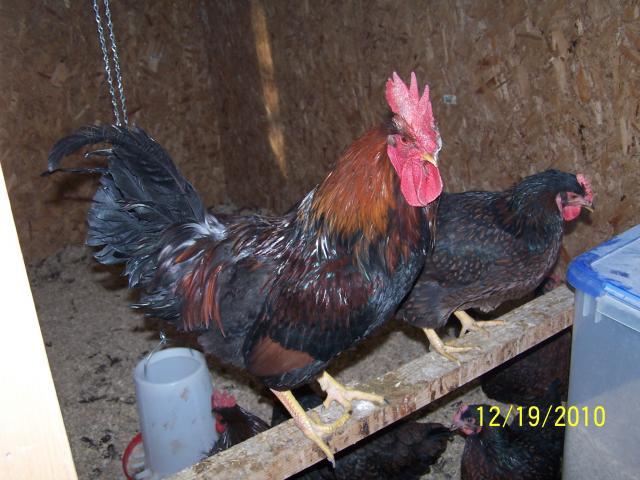Heirloom Barnevelder Egg Colour, and Original Plumage Markings.
Hello from Tasmania to all members of the forum who are interested in Barnevelder history and egg colour.
I have been breeding Barnevelders for over thirty years - an original heirloom Tasmanian strain that goes back to pre 1916 bloodstock.
I breed to the original Dutch Utility Standard for a medium to large free range, dual purpose fowl - we are talking now about a commercial standard with a mix of markings in a breed with flocks of more than 30,000 birds, in 1910.
The dominant colour variety was a partridge coloured bird ( all black breasted male, female with double or single lacing at the shoulders and upper back moving towards partridge stippling or flecking at the tail) which predated the push towards perfected double lacing, post 1916, and the crossing with Cornish game, to achieve that end ( a move which ruined those bloodlines as dark egg layers).
This disastrous crossing first took place in England, at some point, between 1918 and 1928, leading to the import of British bloodlines of what I call "British Misfit Barnevelders" back into Holland, post 1945, which followed the virtual annihilation of the surviving pioneer Dutch bloodlines, in Holland, through the war, but especially in 1944 and 1945, in what the Dutch still call their "starving time".
In this matter, I must correct a mistake made by others who have attributed the loss of the original lines in Holland to World War 1(1914 - 1918)
It was in World War 11(1939 - 45) that the flocks were all but wiped out, for food - someone has dropped a digit off my original published text - from which they were drawing.
I am here to help people with their questions on egg colour, background, and the story of the survival of the original pre 1916 bloodlines in Tasmania.
Some of the information you will read in this posting was passed on to me by the son of one of the original Barnevelder breeders, whom I met in 1993 at my farm in SE Tasmania, and who worked with his fathers flocks from 1910 to 1931, and some of it has been pieced together, across the years, through discussions with long time Barnevelder breeders from Holland, and here in Australia, and with Dutch immigrants to Tasmania, who first brought the breed to this Island.
Firstly - the question of egg colour.
There is a lot of confusion and misinformation being passed around on this point.
The original Barnevelder egg - as fixed between 1890 and 1905 - and which survives in the heirloom Tasmanian bloodline, was a large, very dark, highly polished red brown egg which could vary in it's toning from burnt umber and sienna through to a dark, red brown copper, sometimes with shadings of colour moving towards mahogany, or the other way, towards nankeen.
The Barnevelder egg was not a dark chocolate brown, but always kept a bright, red brown, base to its colour. Luster on the egg is essential - true Barnevelder strains were bred to lay highly polished eggs with extended shelf life, in the days before refrigeration, and could be kept for up to 16 weeks, through the winter, on the shelf, and eaten fresh.
Describing the egg colour as "terra cotta" or "golden" is not helpful.
For those of you who have seen images of Uluru - here in Australia, at sunset - then that glorious colour is something like the shades of the very best Barnevelder eggs, but in a well balanced flock you want around half your pullets laying the darker coloured egg, and half laying eggs of lighter shadings, as the darkest egg colour will come from birds averaging around 180 eggs a year, while birds laying with a lighter egg colour can average up to 250 eggs a year.
To give you an idea of the mix - at the moment, I have one flock of twelve 26 week old pullets split into two pens of six birds each. One flock - Pen A - is averaging 4.6 eggs per pen per day, from June 1, the other: pen B - is averaging just on 3 eggs per day, from June 1( they started laying mid May)
The eggs from pen A are a good solid red brown colour, but those from pen B are so dark, and so finely marbled with deeper coloured flecks, you could hold them in your hands all day, and just stare at them and smile. They are a true work of art - and it is the aesthetic of the egg which is the whole secret to Barnevelder breeding - thy were developed to supply a niche market, in England, between 1890 and 1915 - for the very darkest, most lustrous, rich red brown egg - the English were nuts about them, and their desire for the egg, for which they paid enormous premiums, led to the breed becoming so popular in Holland, where the local domestic market preference - in previous times - was actually for a white egg.
It is this marbling, or flecking of the egg - beautiful patterns of fine pointing, or darker freckling, which is highlighted by the deep luster of the shell - which marks the Barnevelder egg out from all others.
Once you have held such an egg in your hand, you could not ever be happy with anything else.
Just as the colour of terra cotta will vary with the source of the clay, so too will Barnevelder egg colour vary form bird to bird and strain to strain, but there is one thing which I can tell you with complete certainty: if you try to breed towards perfect double lacing down to the tail in the female - as demanded by exhibition standards for double laced birds - you will lose your egg colour, and be creating bloodlines with a weakened resistance to Marek's.
Mareks only became an issue with Barnevelders once the double laced standard became dominant, after 1920, but it was not Marek's which wiped out more than half the Dutch flocks in the 1920's - as reported by some - but an outbreak of Newcastle's disease.
Marek's - which is a "piggy back" virus - that is: one which gets a hold in the wake of other stress factors - then came in to knock over many of the surviving birds, after they had been left in a weakened state by the Newcastle outbreak.
The photo shown of half a dozen eggs - posted on this website - was taken at my farm. I would be interested to know who put it up.
For the interest of readers - I dislike all feathered legged breeds, and would not have anything as hideous as a Marans anywhere near my land, but I loathe game birds equally - the Cornish or Indian Game bird being, in my opinion, just about the ugliest and most useless of all breeds.
I would never let such unnatural shapes of creatures stand before me.
Finally let me say that - if it does not have the true Barnevelder egg - it is not a Barnevelder - as that is what the breed was created to lay - the unique Barnevelder egg.
All the fuss made about double lacing is focused on something which has nothing to do with the first principle, and the true purpose, of the breed.
More on Barnevelders later.

